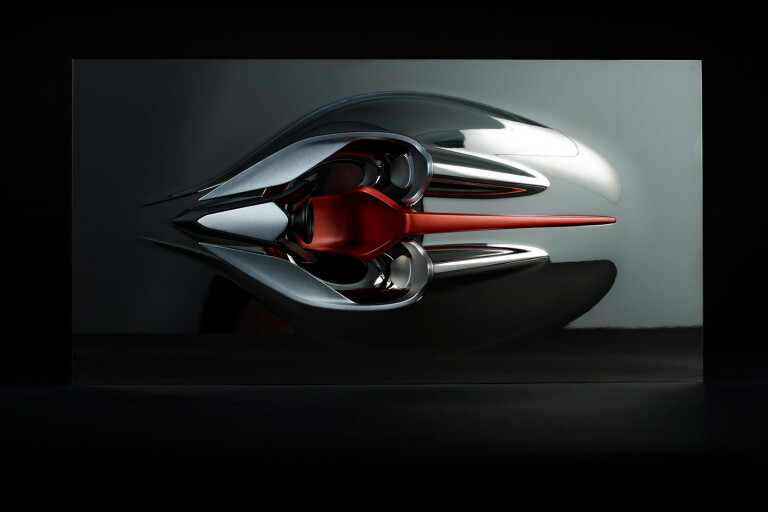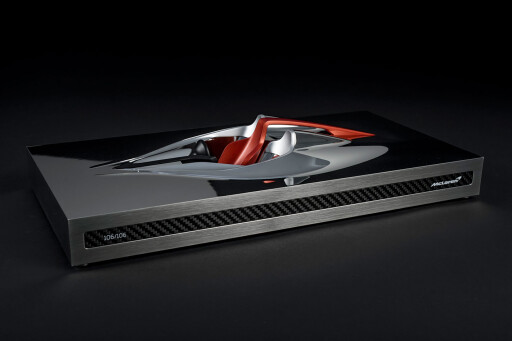
McLAREN has teased the interior of its BP23 hypercar – in a piece of art that will be sent to all 106 buyers before they even take delivery of the hybrid-engined three-seater.
Called the “Speed Form”, the individually numbered artworks signed by McLaren chief Mike Flewitt and design head Rob Melville show the three-seat cockpit in fine detail, including the front-and-centre driving position. It reveals the more modern take on the McLaren F1 will adopt a much more design-focused, swooping form than the race car for the road feel of the earlier hypercar.
 “The BP23 Speed Form provides an early hint of the luxury and imagination that extends under the skin of the vehicle to its icon-eclipsing interior, which is arranged in the same three-seat, central driving position layout as the McLaren F1 that inspired it,” McLaren said.
“The BP23 Speed Form provides an early hint of the luxury and imagination that extends under the skin of the vehicle to its icon-eclipsing interior, which is arranged in the same three-seat, central driving position layout as the McLaren F1 that inspired it,” McLaren said.
Few details are known about the Ultimate Series BP23 “hyper-GT”, although McLaren has confirmed that just like the Formula 1-derived Mercedes-AMG Project One it will use a petrol-electric hybrid system to provide its propulsion. The British sports car brand has already confirmed the BP23 will be faster than the F1 – which at 386.4km/h held the record as the world’s fastest production car for almost a decade. In fact, the McLaren F1 still holds the record as the fastest normally aspirated production car. For the BP23, the top speed will be more than 390km/h.
 McLaren is yet to lock in the details of the BP23’s engine, although it’s widely believed that it will be a more advanced version of the 600kW-plus twin-turbo 4.0-litre V8 that will power the upcoming Senna super coupe. The brand is believed to be taking what its engineers learned from the development of the hybrid-engined P1, and hardening it up for performance.
McLaren is yet to lock in the details of the BP23’s engine, although it’s widely believed that it will be a more advanced version of the 600kW-plus twin-turbo 4.0-litre V8 that will power the upcoming Senna super coupe. The brand is believed to be taking what its engineers learned from the development of the hybrid-engined P1, and hardening it up for performance.
At its core, the BP23 is expected to use McLaren’s Monocage, a carbonfibre tub that in the 720S becomes the structural centre of modular drive and steering units that fit to either end. It’s expected the tub will need significant modification to adapt to the centrally located driving position.
According to McLaren, the hand-painted, 3.6kg Speed Form sculpture takes about 100 hours – the equivalent of almost two weeks of work – to make. Just polishing it accounts for a third of that time.
We’re also yet to learn what the BP23 will wear as its official name once it is officially revealed – that date is yet to be confirmed. McLaren took a big diversion from its usual alphanumerical mix for the Senna, and has confirmed it will do the same thing with the hyper-GT.
Oh, and why only 106 customers? That’s exactly the same number of McLaren F1s that the company built and sold.

COMMENTS